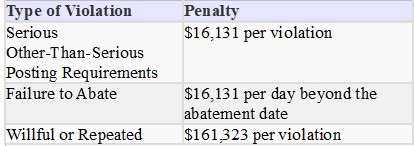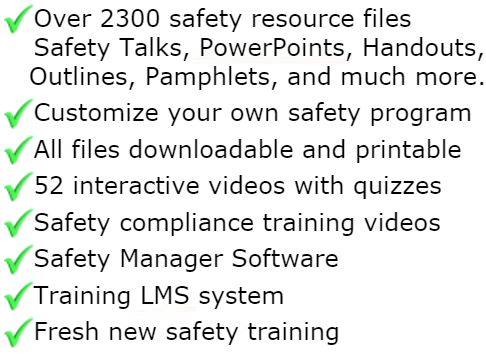
Boiler Safety
Many types of boilers that are used in commercial and public facilities that produce steam (either low or high pressure), hot water heating for use in comfort air heating systems, and hot water supply for use in domestic water systems (such as showers, sinks, pools, or for miscellaneous use) which includes potable hot water heater type boilers.
Boilers used for hot water supply or potable hot water supply can be further defined in the following two (2) categories:
• A hot water supply boiler means a boiler designed for operation at a pressure not exceeding 160 psig or temperatures not exceeding 250 degrees Fahrenheit at or near the boiler outlet if the boiler’s: heat input exceeds 200,000 BTUs per hour; water temperature exceeds 210 degrees Fahrenheit; or nominal water-containing capacity exceeds 120 gallons.
• A potable water heater means a boiler designed for operation at pressures not exceeding 160 psig and water temperatures not exceeding 210 degrees Fahrenheit if the boiler’s: heat input exceeds 200,000 BTUs per hour or nominal water-containing capacity exceeds 120 gallons.
CAUSES OF BOILER ACCIDENTS
Boiler systems are designed for safety and efficiency. The boiler operator is the key to safe boiler operations. Having knowledge about boiler systems and maintenance can ensure years of safe, reliable service.
History has shown that without proper operation and maintenance, boiler conditions and safety deteriorate causing potential hazards due to neglect and misunderstanding. Routine maintenance is well within the ability of most boiler operators. Boiler tune up and repairs, however, are best left to trained professionals. Understanding when to turn to qualified professionals for assistance is one of the operator’s responsibilities and can save time and money. Some of the areas where trained professionals are needed are:
• Leaking safety and or safety relief valves
• Feed water to boiler
• Steam leaks (steam systems)
• High stack temperatures (excess of 350ºF)
• Insufficient heat for building
• Condensate dripping down stack or out the front of the boiler
• Constantly resetting of controllers and safety devices
Boiler accidents can occur when the boiler is allowed to operate without adequate water in the boiler. Proper functioning low water cutoffs are essential to prevent these types of accidents. Boiler damage can run from severe buckling and deforming of the boiler to complete meltdown or potential boiler explosions.
Another type of boiler accident and the most lethal is excessive pressure. These accidents occur when the boiler can no longer contain the excessive pressure allowed to build in the boiler. Excessive pressure accidents, even in small boilers, have been known to completely destroy a building.
Fuel related accidents usually occur when there is a failure to purge combustible gases from the firebox before ignition is attempted. Leaking fuel valves can also be the cause of these accidents. If the operator notices any gas odor, the boiler should be shut down and the fuel supplier notified immediately.
Never bypass safety devices with jumper wires to restart your boiler. Unintended ignition of unburned combustion gases in the fire box is possible.
All materials in the members area for this topic index
Program Material | ||
Programs (written) | (1) | |
| Boiler Safety Program | Download | |
Fact Sheets | (1) | |
| Boiler Operation Safety Safety Topic Fact Sheet | Download | |
Forms & Documents | ||
Audits | (1) | |
| Boiler Safety Audit Guide | Download | |
Checklists | (2) | |
| Boiler Weekly Monthly Checks Form | Download | |
| Gas Train Checks Form | Download | |
Training Material | ||
Accident Reports | (1) | |
| Boiler And Steam Burn Accident Report | Download | |
Management | (1) | |
| Boiler Safety Management Safety Brief | Download | |

GET INSTANT ACCESS
to THE MEMBERS LIBRARY
Safety materials created by safety professionals.
Access to the Safety Manager software.
Wide variety of safety videos and courses.
**Brand New** Safety Training Management System
Pre-Made Safety Materials Ready For Use
Created by experienced safety professionals & risk consultants. Saving you time, money, and risk of injuries.
95% of the work already done.
Below are the maximum penalty amounts, with the annual adjustment for inflation, that may be assessed after Jan. 15, 2024. (See OSHA Memo, Jan. 8, 2024).

**New OSHA HEAT 90 DAY**
>>Download Free HERE<<
**New 2024 OSHA 300 Form**
>>Download Free HERE<<
**Brand New**
Free with full membership subscription
Training LMS System
Ask The Safety Consultant
Safety Equipment Deal Finder

“SafetyInfo.com is the first go-to website for safety professionals and companies to use in establishing a solid safety program"
-Mike McKenzie, Certified Safety & Health Manager (CSHM), McSafety Solutions™
Note: You must have a full subscription to the Safety Library in order to use this material. Any use outside of your organization, for resell, or without an active membership is strictly prohibited and may result in prosecution under copyright infringement laws. Please contact us first, if you would be interested in reselling or using our materials for reproduction.
Inside the Members Library
Topic Index
Accident Prevention
Air Quality
Asbestos
Bloodborne Pathogens
Boilers
Chemical Safety
Compressed Gas
Confined Space
Construction
Construction Worksite
Cranes & Slings
Driver / Fleet Safety
Drug Free Workplace
Electrical
Emergency Management
Engineering Safety
Environmental
Equipment
Ergonomics
Fall Protection
Fire Safety & Prevention
First Aid
Flammable Materials
Forklifts
Hazard Communication
Hazardous Materials
Hearing Protection
Heat Stress
Hot Work
Housekeeping
Job Safety Analysis
Laboratory
Ladders
Lead
Lockout-Tagout
Machinery & Equipment
Material Handling
MSDS (SDS)
Medical & First Aid
Occupational Health
Office Safety
Off the Job Safety
Personal Protection
Process Safety
Record Keeping
Respiratory Protection
Silica Safety
Rules & Policies
Signs & Labels
Slips, Trips & Fall
Training
Terrorism Programs
Tool Safety
Vehicle & Driver
Violence Programs
Welding & Hot Work
Training Videos
Library Index
Training Materials
Videos/Courses
Talks
Articles
PowerPoint
Handouts
Training Overheads
Quizzes
Supervisor Briefs
Management Briefs
Safety Sessions
2 Minute OSHA Safety Talks
Pamphlets
First Aid Training
Supervisor Training
Hazardous Materials
Bomb Threat
Crossword Puzzles
Biological Agents
Forms & Documents
Forms
Checklists
Audit Guides
Inspections Guides
Signs & Labels
Environmental Audit Guides
Recordkeeping - OSHA 300
Sign & Label Maker
Safety Management Resources
Safety Manuals/Written Programs
Ergonomic Programs
Emergency Plans
Process Safety Management
Construction Safety
Occupational Health
Environmental
Topic Sheets
DOT Fleet-Driver
Hazardous Materials
Chemical Safety
Drug Free Workplace
Terrorism Programs
Development Guides
Safety Manager Software
Safety References & Graphics
Technical Safety Information
Posters
Topic & Fact Sheets
Development Information
Job Specific Safety Rules
Terrorism
Calculators
Safety Comic Strips
New Safety Training System
Schedule and train your employees with our materials. Add unlimited amount of employees. Record all progress and issue certificates. For group and individual training sessions.

